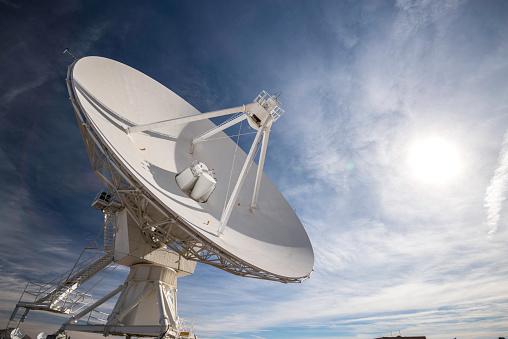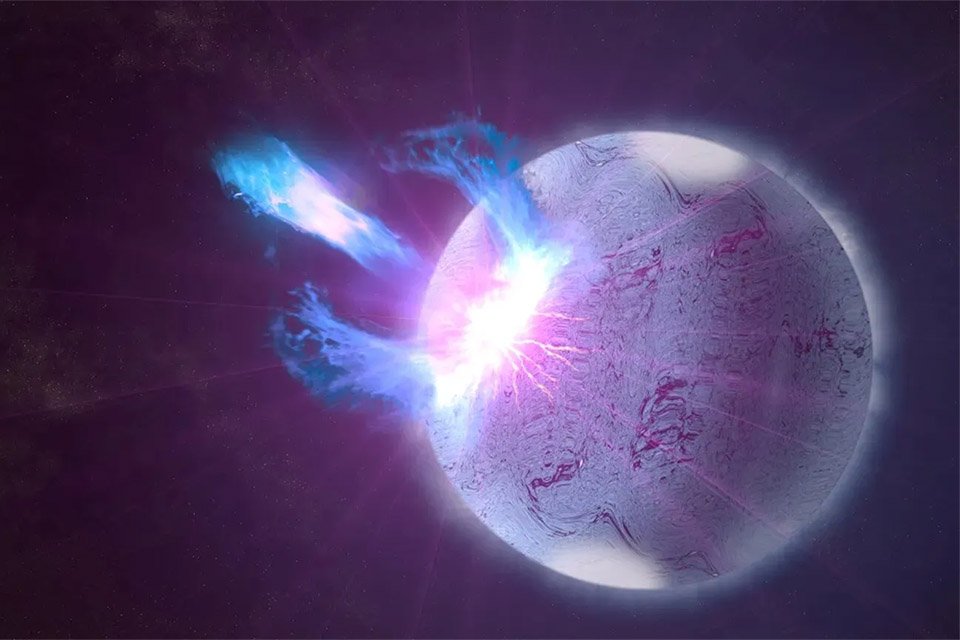Researchers at Japan’s University of Tokyo may have solved one of the greatest astronomical mysteries of our time: origin of fast radio bursts (FRBs). These intense radio bursts (pulses) from space may have their origin in so-called “starquakes,” which are seismic shocks in neutron stars, according to a recent study.
Invisible to the human eye, FRBs can only be detected with radio telescopes. Thousands of these powerful waves, which have been the subject of many studies, novels and movies, come from extragalactic sources, travel across billions of light years and reach Earth every day.
Some previous studies have already investigated solar flares and earthquakes with the energy dissipation of repeated FRBs. Although the authors in the new study did not find a relationship between FRBs and solar flares, They were able to detect several important similarities between these cosmic radio wave bursts and earthquakes.
What makes a neutron star shake?
Neutron stars, known as “dead stars,” bear some striking similarities to the extreme properties of FRBs. They are caused by an explosion (supernova) that occurs when a massive star runs out of fuel.. This event leaves behind a stellar core that has a mass between one and two times the mass of the Sun and collapses to a width of about 20 kilometers.
Researchers suggest that starquakes occur when the surface of a neutron star experiences an ascension similar to our earthquakes. According to the study, this may be due to stress caused by the twisting of very strong magnetic fields characteristic of such dense objects.
To test their hypothesis, the team analyzed the timing and emission energies of nearly 7,000 repeated FRB bursts. applying the same method used to study the time-energy correlation of earthquakes and solar flares.
Why are FRBs similar to earthquakes on Earth?

The study found four main similarities between FRBs and earthquakes:
- The probability of aftershock occurrence for a single FRB and earthquake is estimated to be between 10% and 50%;
- The incidence of aftershocks decreases over time based on a mathematical power relationship;
- Although the average rate of FRB earthquake activity varies significantly, the rate of these seismic aftershocks is always constant;
- No correlation was found between the energies of the main shock and the aftershocks of both events.
These results suggest that neutron stars have solid shells that are subject to any seismic activity. They release enormous amounts of energy, which we see on Earth as FRBs. To effectively validate this proposal, the team will continue to analyze new data from cosmic radio emission bursts as they become available.
At TecMundo I am always informed about the latest discoveries in science and astronomy. If you want to learn a little more about one of the greatest cosmic shows, read the article to understand how Novas, Supernovas, Hypernovas and Kilonovas arise.
Source: Tec Mundo
I’m Blaine Morgan, an experienced journalist and writer with over 8 years of experience in the tech industry. My expertise lies in writing about technology news and trends, covering everything from cutting-edge gadgets to emerging software developments. I’ve written for several leading publications including Gadget Onus where I am an author.













